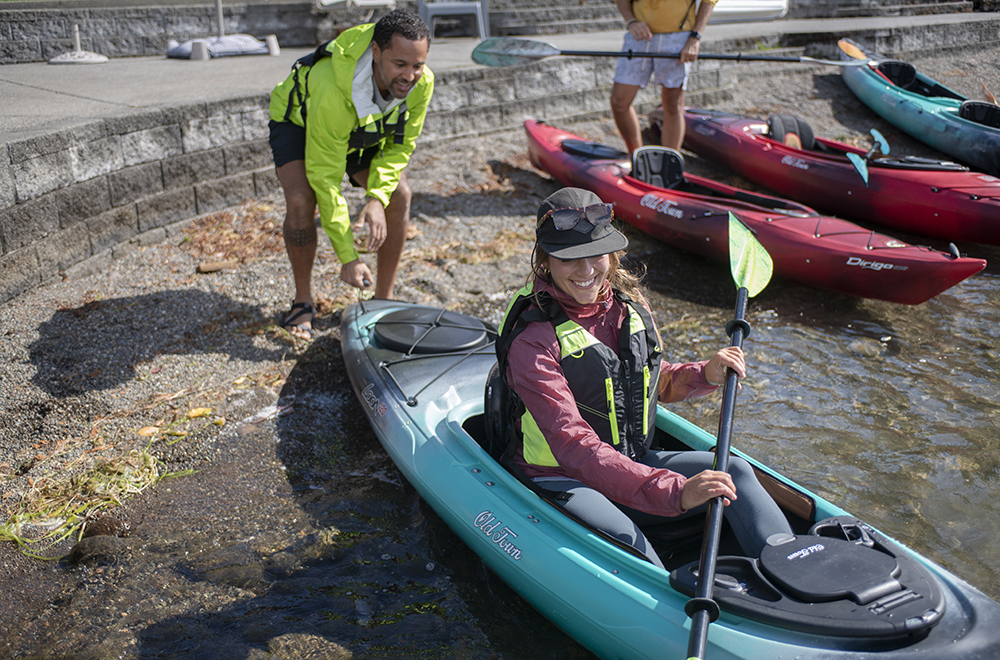Canoe & Kayak Safety Checklist
CANOE AND KAYAK PADDLING SAFETY - THE ESSENTIALS
Kayaking and canoeing are among the most popular outdoor recreational activities in the U.S. and across the globe. As more and more people look to get out on the water, it becomes even more important to ensure the proper safety equipment and protocols are being observed. Even in the calmest of waters, there is potential for danger to arise - and being prepared can mean the difference between a fun, memorable experience and a very bad day on the water.

PRE-TRIP CANOE AND KAYAK SAFETY CHECKLIST
Paddlesports can be physically demanding. Observe the following safety standards every time you get on the water:
- Check the local weather and wave forecast for the area and timeframe of your trip.
- File a float plan. Communicate your trip plans before every outing. Let people know where you plan to go, when you plan to return, and which watercraft you will be in.
- Practice self-rescue and be confident in your ability to recover if you capsize.
- Get paddlesport instruction from a licensed or certified instructor
- Obtain certified first aid and rescue training and carry first aid and rescue equipment
- Always wear a nationally-approved personal flotation device
- Dress appropriately for weather conditions; cold water and/or cold weather can result in hypothermia
- Check your equipment prior to each use for signs of wear or failure (more information on equipment checks below)
- Never use alcohol or mind-altering drugs before or during a paddle
- Do not paddle in flood conditions
- Be aware of appropriate river water levels, tidal changes, dangerous currents, and weather changes
- Scout unfamiliar waters; portage where appropriate
- Do not exceed your paddling ability; be honest with yourself
- Consult your physician prior to beginning your paddlesport training
- Follow the manufacturer's recommendations for the use and limitations of their products

EQUIPMENT SAFETY CHECK FOR ALL WATERCRAFT
- Drain plug is closed
- Hatches are closed and secured
- Seat is secured to the watercraft
- Accessories mounted on accessory tracks are secured
- VHF radio is powered on and functioning properly
EQUIPMENT SAFETY CHECK FOR PEDAL AND POWERED WATERCRAFT
- Propeller is free from debris and prop hardware is secured
- Rudder deployment and steering functions correctly
- All rudder hardware has been inspected and tightened for proper operation
EQUIPMENT SAFETY CHECK FOR POWERED WATERCRAFT
- Battery level is sufficient for the trip
- Battery plugs and terminals are free from debris and corrosion
- Battery plugs and outlets are properly greased
- Battery connections are clean and tightened
- Battery is installed properly and secured to watercraft
- Visit www.oldtowncanoe.com/batteries for more information
- Test motor or pedal drive functionality on land before going out on the water
SAFETY GEAR YOU SHOULD CARRY (AND KNOW HOW TO USE)
- Sponge or bilge pump
- Tow line
- Dry bag (with extra water, food, sunscreen, etc.)
- Knife and basic hand tools/multitool
- First-aid kit
- Basic parts or repair kit (prop, prop pins, kill switch keys)
- Spare paddle
- Paddle float (or other rescue aid for kayaking)
- Throwable floatation device (for canoeing)
- Rope bag (for canoeing)
- Flares*
- VHF Radio*
- Airhorn/whistle*
- Navigation lighting*
*Always check local regulations for watercraft safety requirements in your area.






